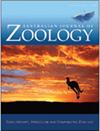优化人工孵化蛋的孵化成功率,以用于西部锯壳龟的保护计划。
IF 1
4区 生物学
Q3 ZOOLOGY
引用次数: 3
摘要
摘要人工孵化卵并将幼龟放归野外是一种常见的保护措施,旨在增加濒危海龟的数量。我们研究了一系列的孵化温度,以确定西方锯壳龟(Myuchelys bellii)蛋孵化成功率最高的最佳温度。我们报道了孵育温度对孵育时间和孵化成功率的影响,并描述了两种实验孵育方法,在相同的孵育温度(27℃)下,孵育成功率分别为77%和97%。在恒温条件下(27℃、28℃和29℃)孵卵,测定温度对孵育期、孵化形态和体外残余蛋黄的影响。孵育时间与孵育温度呈负相关。我们报告了卵和幼体的形态,并表明它们的尺寸与母成虫的尺寸和质量呈正相关。27°C的恒定孵化温度可获得最高的孵化成功率和孵化时最小的外部残余蛋黄,因此推荐用于种群强化计划的鸡蛋孵化。我们的研究首次优化了贝氏龟的人工孵化程序,将为贝氏龟和其他濒危淡水龟的保护举措提供宝贵的资源。本文章由计算机程序翻译,如有差异,请以英文原文为准。
Optimising the hatching success of artificially incubated eggs for use in a conservation program for the western saw-shelled turtle (Myuchelys bellii)
Abstract. Artificial incubation of eggs and the release of hatchlings into the wild is a common conservation intervention designed to augment threatened turtle populations. We investigate a range of incubation temperatures to establish an optimal temperature for maximum hatching success of western saw-shelled turtle (Myuchelys bellii) eggs. We report on the influence of incubation temperature on incubation duration and hatching success and describe two experimental incubation methods which, for the same incubation temperature (27°C), resulted in 77% and 97% hatching success, respectively. Eggs were incubated at constant temperatures (27°C, 28°C and 29°C) to determine the influence of temperature on incubation period, hatchling morphology and external residual yolk. Incubation duration was negatively correlated with incubation temperature. We report on the morphology of eggs and hatchlings and show that their dimensions are positively correlated with maternal adult size and mass. A constant incubation temperature of 27°C produced the highest hatching success and smallest external residual yolk on hatching and is therefore recommended for incubation of eggs for population reinforcement programs. Our study is the first to optimise artificial incubation procedures for M. bellii and will be a valuable resource for M. bellii and other threatened freshwater turtle conservation initiatives.
求助全文
通过发布文献求助,成功后即可免费获取论文全文。
去求助
来源期刊
CiteScore
2.40
自引率
0.00%
发文量
12
审稿时长
>12 weeks
期刊介绍:
Australian Journal of Zoology is an international journal publishing contributions on evolutionary, molecular and comparative zoology. The journal focuses on Australasian fauna but also includes high-quality research from any region that has broader practical or theoretical relevance or that demonstrates a conceptual advance to any aspect of zoology. Subject areas include, but are not limited to: anatomy, physiology, molecular biology, genetics, reproductive biology, developmental biology, parasitology, morphology, behaviour, ecology, zoogeography, systematics and evolution.
Australian Journal of Zoology is a valuable resource for professional zoologists, research scientists, resource managers, environmental consultants, students and amateurs interested in any aspect of the scientific study of animals.
Australian Journal of Zoology is published with the endorsement of the Commonwealth Scientific and Industrial Research Organisation (CSIRO) and the Australian Academy of Science.

 求助内容:
求助内容: 应助结果提醒方式:
应助结果提醒方式:


